I never get tired or fell out of breath while climbing stairs. 😎😎
Why We Become Out of Breath When Taking the Stairs (It’s Not Because We Are Out of Shape)
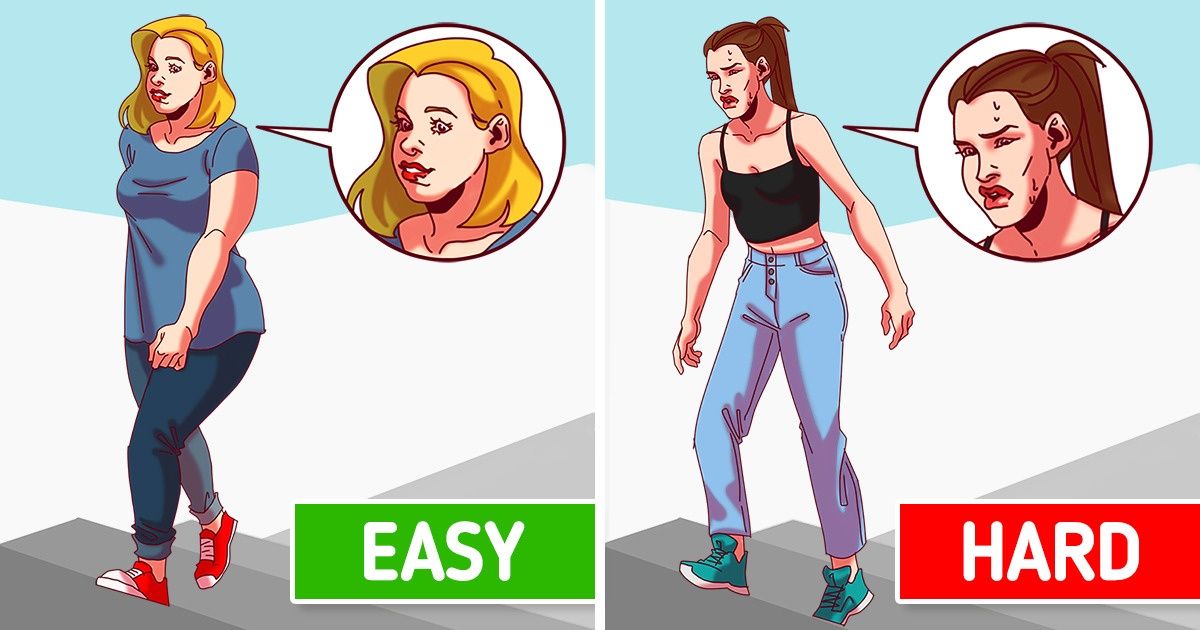
Skipping the elevator and taking the stairs instead can be a tough decision, and physically challenging physically too. Becoming breathless can happen to all of us, even if we work out a lot. Luckily, it doesn’t necessarily mean we should work out even more or that we have health issues.
We at Bright Side sometimes feel that we’re really out of shape when we get winded after climbing the stairs. But it’s probably nothing to worry about! Just consider contacting a doctor if you experience any of the symptoms we’re mentioning in the first point.
You might have health issues.
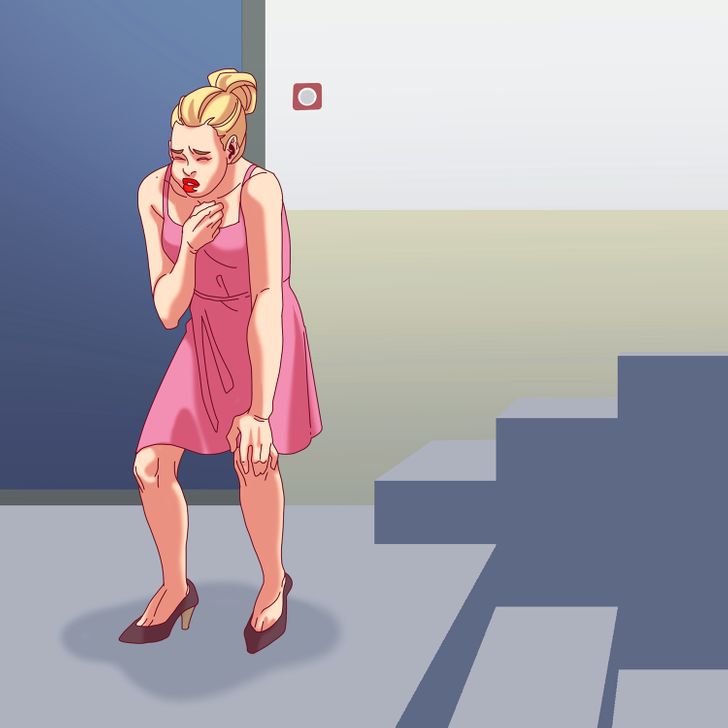
There are some things you should be on the lookout for if you get winded after going up a flight of stairs. It can be nothing to be concerned about. But if you also get chest pain, swollen feet or ankles, or if you start coughing, you should call your doctor, because those could be signs you have health problems.
You aren’t warmed up.
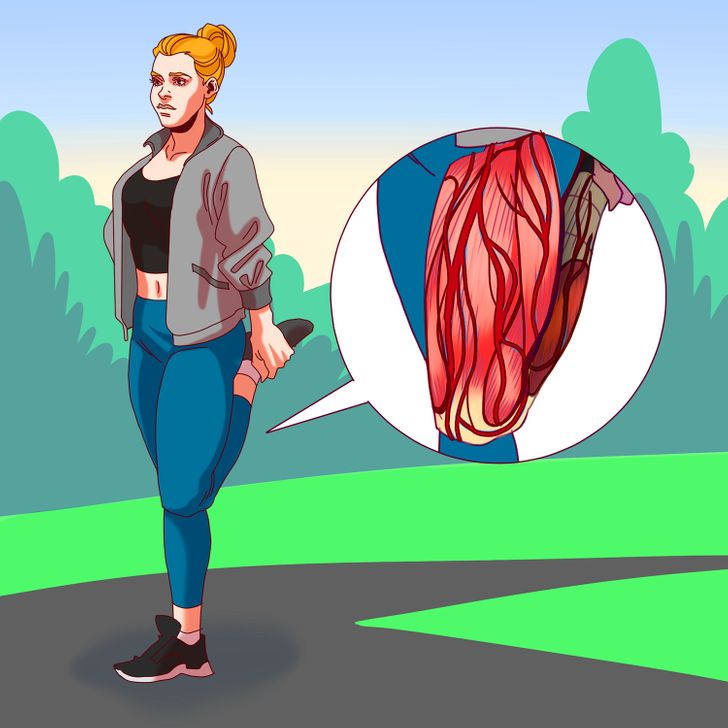
Before starting our workout, we usually do a warm-up. This is important because it helps warm up the muscles, gradually increase blood flow and oxygen, and lower the risk of getting injured.
And when you start walking up the stairs, you quickly go from resting to being a lot more physically active, without warming up beforehand. That’s why your body will need to work harder to have more oxygen delivered to your muscles in a very short period of time, and your heart rate will increase. So it’s only natural that you feel winded afterward.
It’s not like regular cardio.
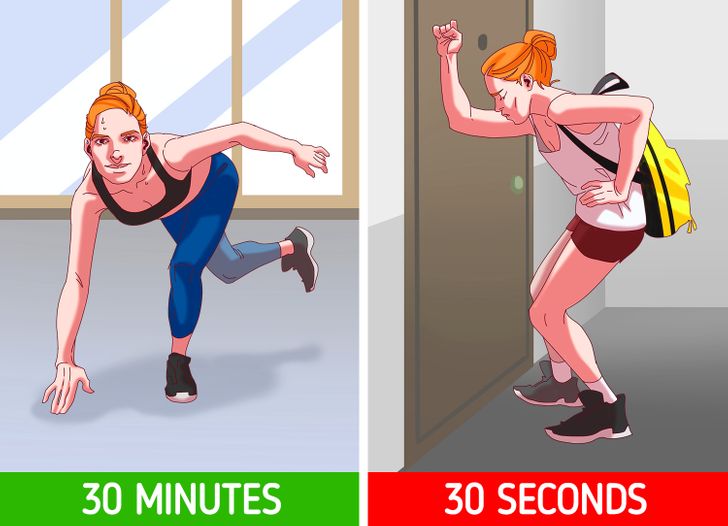
Stair climbing uses a
Your muscles get fatigued faster.
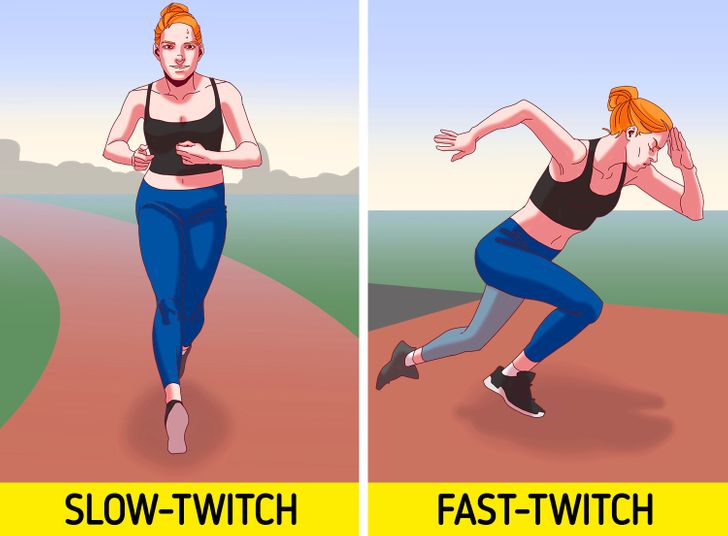
You have 2 types of muscle fibers — slow-twitch and fast-twitch. If you’re an experienced runner, you can endure long-distance running, thanks to the slow-twitch fibers, which get fatigued less easily but don’t have a lot of power and strength. When you walk up the stairs, you need fast-twitch muscles for those quick explosive movements, but they tire out faster.
Someone who doesn’t work out a lot might not be out of breath as fast as someone who does.
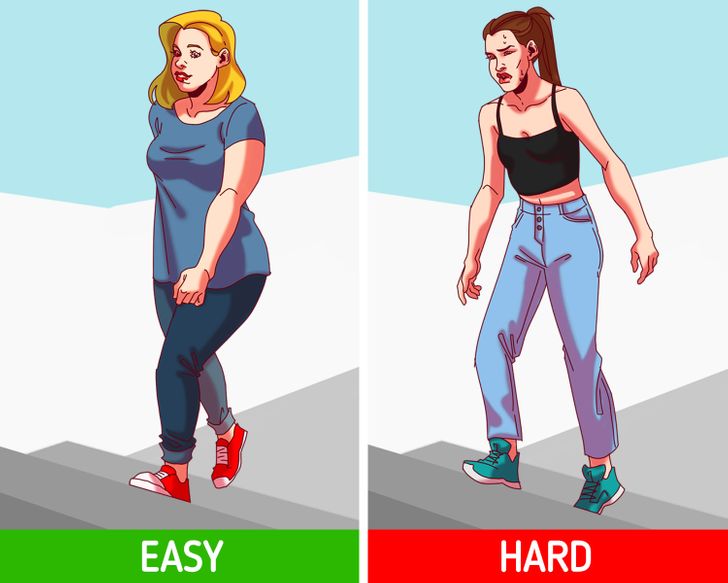
If you’ve trained your endurance by running, you’ve been using your slow-twitch fibers more and they rely on aerobic metabolism. However, when you climb the stairs, those short bursts of activity require anaerobic metabolism. This produces carbon dioxide and hydrogen, which endurance athletes are more sensitive to than other people. That’s why it can be easier for someone who doesn’t exercise a lot to go up the stairs, than for someone who does endurance training.
How you can make stair climbing easier
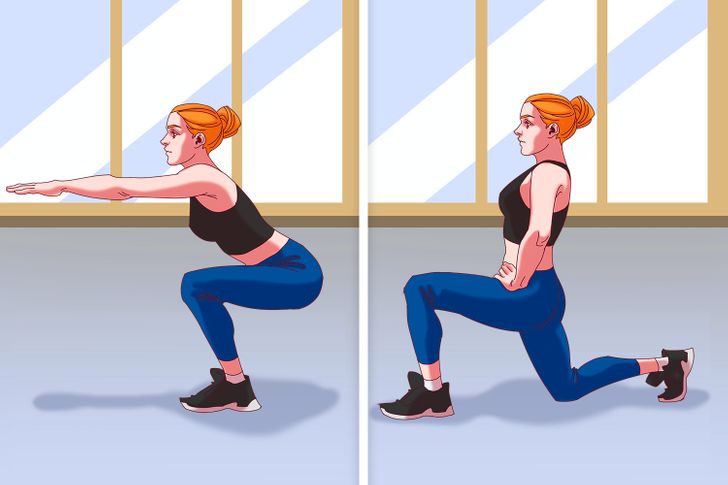
Simply try using the stairs more often. Because we don’t do it very much, it’s understandable that our bodies aren’t used to doing that kind of physical activity, and it might be more difficult than we expect. So if we do it more often, we’ll train to be able to do just that.
You can also try exercises like sprints, jumps, or other explosive movements that require sudden bursts of energy, like when you’re climbing stairs. Another thing you can do is train your glutes and legs by doing squats and lunges.
Do you often take the stairs instead of the elevator? Do you become breathless? What kind of exercises do you do and how often do you do them?
Comments
Related Reads
16 Moments That Remind Us to Stay Kind Even If the World Turns Ice Cold

12 Moments That Prove Kindness Isn’t Weakness—It’s Power Disguised as Empathy

I Refuse to Walk My Daughter Down the Aisle With the Man Who Ruined Our Family

20 Tutors Reveal What Really Goes On Behind Closed Doors

I Excluded My Wife From My Kids’ Core Memories—She’s Too Busy Working

18 Stories That Show Kindness Can Be the Strongest Force of All

My Sister Refused to Let Me Be in Her Wedding, and the Reason Shattered Me

15+ Raw Stories About Jealousy That Can Leave You Speechless

My Daughter Refused to Support Me—Despite Everything I Had Given Her

I Caught My MIL Secretly Filming Me While I Breastfed My Baby

I Refused My DIL’s Outrageous Diet Demands—I’m Not an On-Call Chef

12 Family Secrets That Could Rival Any Hollywood Storyline
